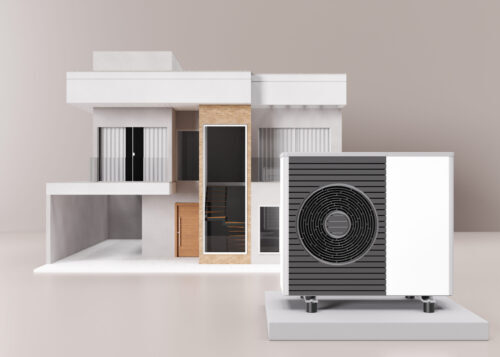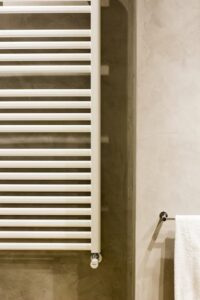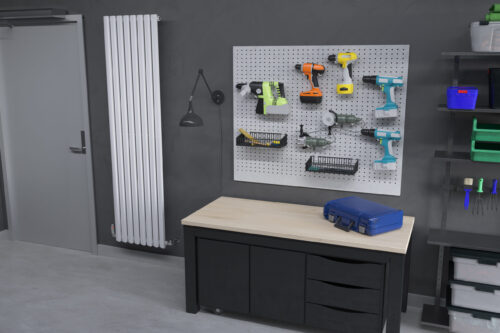
Is the COP on a Heat Pump Accurate?
I feel like all the blogs I am writing lately are a minefield because I generally find myself battling against the industry in the words I'm writing. The answer as to whether the COP on a heat pump is accurate? They could be, but they aren’t required (by legislation or law) to be. It’s all down to the honesty and integrity of the heat pump supplier, coupled with the savvy of the heat pump engineer, to adapt the COP results to apply to both your specific property and geographical weather conditions. So even if the heat pump supplier is honest and integral, what they display may only apply if you live in Brighton, not Scotland. This blog gets a little bit complicated in parts, but bear with us, it all works out to a pretty picture at the end. First, let's cover some terminology mentioned in this blog: COP (Coefficient of Performance) - The efficiency of a heat pump is defined by a principle called COP. The calculation for the COP = heat generated / power used. The lower the temperature you need to heat the water for your radiators, the higher the COP/efficiency is. SCOP (Seasonal Coefficient of Performance) - is a theoretical indication of the anticipated efficiency of a heat pump aggregated over a year using standard climate data across Europe. Let’s start with a more common concept, heat energy requirement.How do home heating energy requirements work?
This is a calculated value of your property or room's energy requirement based on the construction materials of your property, your internal temperature and your external temperature. Let’s use the below variables for a sample home energy requirement for heating:- When it is -1°C outside
- And it is 20°C Inside
- To maintain the internal temperature of 20°C inside, I need 8KW of energy.
| Internal Temperature | Outside Temperature | Temperature difference | Energy Requirement (KW) |
| 20 | -7 | 27 | 10.3 |
| 20 | -6 | 26 | 9.9 |
| 20 | -5 | 25 | 9.5 |
| 20 | -4 | 24 | 9.1 |
| 20 | -3 | 23 | 8.8 |
| 20 | -2 | 22 | 8.4 |
| 20 | -1 | 21 | 8.0 |
| 20 | 0 | 20 | 7.6 |
| 20 | 1 | 19 | 7.2 |
| 20 | 2 | 18 | 6.9 |
| 20 | 3 | 17 | 6.5 |
| 20 | 4 | 16 | 6.1 |
| 20 | 5 | 15 | 5.7 |
| 20 | 6 | 14 | 5.3 |
| 20 | 7 | 13 | 5.0 |
| 20 | 8 | 12 | 4.6 |
| 20 | 9 | 11 | 4.2 |
| 20 | 10 | 10 | 3.8 |
| 20 | 11 | 9 | 3.4 |
- Energy requirement is based on temperature gradient, this is the difference between two measured temperatures. In our case, the internal temperature we want and the external temperature.
- For every degree difference in our temperature gradient, we can calculate the energy loss. In this case, we had 8KW at -1 outside and 20°C inside, which is a temperature difference of 21°C. 8KW/21 = 0.381 KW
- We multiply that by the other temperature differences to determine the energy loss that will occur for our property as external conditions change.
| Internal Temperature | Outside Temperature | Temperature difference | Energy Requirement (KW) |
| 17 | -7 | 24 | 9.1 |
| 17 | -6 | 23 | 8.8 |
| 17 | -5 | 22 | 8.4 |
| 17 | -4 | 21 | 8.0 |
| 17 | -3 | 20 | 7.6 |
| 17 | -2 | 19 | 7.2 |
| 17 | -1 | 18 | 6.9 |
| 17 | 0 | 17 | 6.5 |
| 17 | 1 | 16 | 6.1 |
| 17 | 2 | 15 | 5.7 |
| 17 | 3 | 14 | 5.3 |
| 17 | 4 | 13 | 5.0 |
| 17 | 5 | 12 | 4.6 |
| 17 | 6 | 11 | 4.2 |
| 17 | 7 | 10 | 3.8 |
| 17 | 8 | 9 | 3.4 |
| 17 | 9 | 8 | 3.0 |
| 17 | 10 | 7 | 2.7 |
| 17 | 11 | 6 | 2.3 |
How does this relate to a COP?
The Coefficient of Performance works in a similar way, it changes depending on outside temperatures vs inside water temperature. This is a table from the requirements BS EN 14511 part 2 which shows the most favourable COP. Outdoor Heat Exchanger = Heat Pump/external air temperature. Indoor Heat Exchanger = Water temperature flowing to radiators or underfloor heating. 
This is what must be displayed against the product, per part 4 
Then this is what the rating test results need to show, per part 3 
We then find this definition in Part 1 
So it's ambiguous as to what actually needs to be displayed to sell the product. If I were to be strict about what this says, as there are 4 air to water tables, at a minimum we should see 4 COPs for a heat pump. Where A = Inlet dry bulb temperature (outside air temp) W = Outlet Temperature (water temperature flowing to radiators)
- A7/W35
- A7/W45
- A7/W55
- A7/W65
| Internal Temperature | Outside Temperature | Temperature difference | Energy Requirement (KW) |
| 20 | -7 | 27 | 10.3 |
| 20 | -6 | 26 | 9.9 |
| 20 | -5 | 25 | 9.5 |
| 20 | -4 | 24 | 9.1 |
| 20 | -3 | 23 | 8.8 |
| 20 | -2 | 22 | 8.4 |
| 20 | -1 | 21 | 8.0 |
| 20 | 0 | 20 | 7.6 |
| 20 | 1 | 19 | 7.2 |
| 20 | 2 | 18 | 6.9 |
| 20 | 3 | 17 | 6.5 |
| 20 | 4 | 16 | 6.1 |
| 20 | 5 | 15 | 5.7 |
| 20 | 6 | 14 | 5.3 |
| 20 | 7 | 13 | 5.0 |
| 20 | 8 | 12 | 4.6 |
| 20 | 9 | 11 | 4.2 |
| 20 | 10 | 10 | 3.8 |
| 20 | 11 | 9 | 3.4 |
This is taken from a heat pump guide, it gives me a bit more information about lower external temperatures, but without the water temperature, it still isn’t useful. 
This example from Panasonic however, actually has everything we want. Sadly, it has some information that can be misleading depending on your specific circumstances. 
Now the COP here is useful, but the SCOP (Seasonal Coefficient of Performance) isn’t useful. There is a heating cold climate SCOP which shows Water at 35°C would be 3.43 and water at 55°C would be 2.90. This is odd because the COPs above show: A-7/W55 = 1.77 A+7/W55 = 2.41 So how is it possible to get a 2.90 average SCOP for a cold climate? What is an average climate? What is a warm climate? This just leaves us with more questions. But let's fill out what is clear on our table, we’ll estimate the temperatures using the data available (ones in yellow are taken from the above Panasonic data). This table reflects the data that is available:
| Internal Temperature | Outside Temperature | Temperature difference | Energy Requirement (KW) | COP W35 | COP W55 |
| 20 | -7 | 27 | 10.3 | 2.52 | 1.77 |
| 20 | -6 | 26 | 9.9 | 2.60 | 1.80 |
| 20 | -5 | 25 | 9.5 | 2.68 | 1.82 |
| 20 | -4 | 24 | 9.1 | 2.77 | 1.85 |
| 20 | -3 | 23 | 8.8 | 2.85 | 1.88 |
| 20 | -2 | 22 | 8.4 | 2.93 | 1.90 |
| 20 | -1 | 21 | 8.0 | 3.01 | 1.93 |
| 20 | 0 | 20 | 7.6 | 3.10 | 1.96 |
| 20 | 1 | 19 | 7.2 | 3.18 | 1.98 |
| 20 | 2 | 18 | 6.9 | 3.26 | 2.01 |
| 20 | 3 | 17 | 6.5 | 3.5 | 2.09 |
| 20 | 4 | 16 | 6.1 | 3.74 | 2.17 |
| 20 | 5 | 15 | 5.7 | 3.98 | 2.25 |
| 20 | 6 | 14 | 5.3 | 4.22 | 2.33 |
| 20 | 7 | 13 | 5.0 | 4.46 | 2.41 |
Seeing this in a chart paints an interesting picture, considering that it's the coldest part of winter that costs us the most money. The COP may rise above that energy requirement line, however, that would mean increased savings on very little fuel consumption. 
So, for example, if you have an existing property built before 2005, you’re unlikely to get the COP for W35 when it is below 0°C outside but it may be possible when it is +7°C outside. So if we have some comparison costs on our two different Heat pump COP vs our existing types of home heating, what would that look like? 
How realistic is achieving COP A-7/W35?
It isn’t realistic, but neither is A+7/W55. If it were as cold as -7°C outside, A-7/W55 is more accurate. Then, as it gets warmer, the internal water temperature can lower (increasing the COP). So for accurate costs, we need to blend the two water temperatures a bit to demonstrate going from A-7/W55 to A7/W35. 
As you can see, the price of each system decreases as the temperature increases. So why do we say the SCOP (Seasonal Coefficient of Performance) is no use?
What is wrong with the SCOP?
The process and principle behind this is a good idea, but it should never be shown on a heat pump product because it’s very misleading. Quite a few of you may be saying “-7°C isn’t realistic”, which would be shortly followed by a voice from the north saying “Come to Scotland”! A SCOP will change depending on geographical location. So the question becomes - even in a specific geographical location, is the SCOP any good? It is only as good as the person calculating it. You could just average the COPs, but that would mean nothing (a pretty decent maths pun there if you can spot it, if you know what I MEAN, booo hisss get off the stage), because as we have shown, it is not only the COP that is impacted by temperature but also the energy required. Therefore, we need to have weighted averages for a SCOP based on your geographical location. Let's compare our two gas solutions to the heat pump. Say we spend 1 hour at -7°C, how many hours at +7°C are needed to break even on our costs for heat pump vs gas?
Therefore, we need to have weighted averages for a SCOP based on your geographical location. Let's compare our two gas solutions to the heat pump. Say we spend 1 hour at -7°C, how many hours at +7°C are needed to break even on our costs for heat pump vs gas?
| Outside Temperature in given hour | Condensing Gas Boiler 93% efficient | 93% efficient Gas Running Total | Gas 60% efficient | 60% efficient Gas Running Total | Blended Heat Pump solution | Heat Pump Running total |
| -7 | 1.13 | 1.13 | 1.75 | 1.75 | 2.03 | 2.03 |
| 7 | 0.54 | 1.67 | 0.84 | 2.59 | 0.38 | 2.41 |
| 7 | 0.54 | 2.21 | 0.84 | 3.43 | 0.38 | 2.79 |
| 7 | 0.54 | 2.75 | 0.84 | 4.27 | 0.38 | 3.17 |
| 7 | 0.54 | 3.29 | 0.84 | 5.11 | 0.38 | 3.55 |
| 7 | 0.54 | 3.83 | 0.84 | 5.95 | 0.38 | 3.93 |
| 7 | 0.54 | 4.37 | 0.84 | 6.79 | 0.38 | 4.31 |
- a SCOP can only be calculated based on the current geographical location.
- It would need to be weighted based on the climate of that area.
- To be useful to a consumer making a decision, it would need to be weighted against their current system and configuration.










